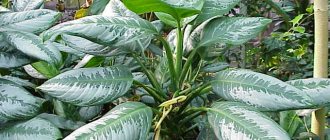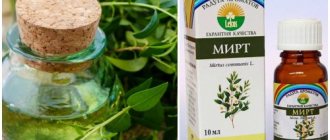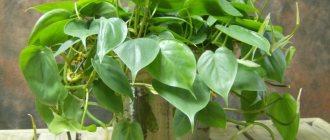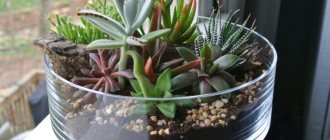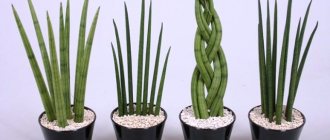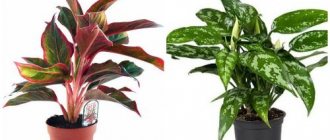Poinsettia (poinsettia) is an amazingly beautiful indoor plant that has captivated flower growers with its unusual bracts of bright colors, similar to stars. Blooms in winter, on New Year's holidays and Christmas. Blooming poinsettia is still an exotic, but very stylish addition to the traditional Christmas tree, garlands and gift wrappings in Russia. In Europe, the plant is most often thrown away after the holidays, not wanting to spend time and effort throughout the year trying to make it bloom again. But if you know the simple rules for caring for poinsettia at home and follow them exactly, the flower will delight you for many years.
Recommendations for those who want to buy poinsettia
The flower is very similar to the Christmas star. At home, it grows up to 3 meters, and the hybrid reaches a height of only 30 centimeters. Today, a low plant can be grown at home, decorating the interior.
It spread around the world after Joel Poinsett, the Minister of Mexico and a lover of botany, working on improving this flower, received a wonderful hybrid.
The colorful plant has another name - spurge. The next name - “Bethlehem star” or “Christmas star” - was given to the flower by florist Albert Ecky. The flower blooms just in time for Christmas, dispelling the winter blues with its scarlet colors.
Seeing this miracle of nature, American residents began to decorate their homes with it just in time for Christmas. Then this plant began to spread throughout the world. The unique appearance of poinsettias is given by bright, red, yellow, white or pink bracts, which are very similar to flowers.
When purchasing different plant varieties, you should pay attention to their characteristics. For example, poinsettia variety Cortez is a bush with white, yellow, and pink bracts. Sonora White has ivory colored perianths. Marbled spurge has bracts that resemble a marble pattern.
When buying a flower, give preference not to those brought from abroad, but to those grown in Russian greenhouses. Such flowers will take root better and will produce cuttings from which you can grow a healthy plant.
Pay attention to specimens where most of the flowers form buds, then they will bloom. Do not buy a plant with fallen buds or unhealthy foliage.
If it’s cold outside, then the Christmas star should be wrapped in thick paper and quickly taken home. After purchasing, the poinsettia does not need to be replanted immediately; it must adapt to new conditions.
Selecting poinsettias in a store.
How to choose poinsettia in a store? It is better to give preference to large and medium-sized specimens. They are usually well leafed. Having a lot of green leaves is very important. Brightly colored bracts are beautiful, but they do not provide the plant with its main function - nutrition. They lack chlorophyll, and therefore photosynthesis is not possible. A plant with a small amount of green foliage, and even more so without it, is practically unable to survive in apartment conditions. Young (small) specimens, stimulated to flower, are very difficult to tolerate apartment conditions. If your goal is to decorate the room for the holiday and then throw it away, we recommend purchasing poinsettia shortly before the event. For real flower growers who are ready to grow this “sultry Mexican” for many years, we recommend buying the plant immediately after delivery to the store. The chances of success will be much higher.
How to care for poinsettia: general rules
Poinsettia is capricious, so care at home should follow all the rules.
First of all, she needs to find a comfortable place. Then create the best temperature conditions, ensure proper watering, fertilizing, spraying and pruning.
When a flower retires, it also needs to create special conditions. It is necessary to monitor the condition of the plant, save it from pests and drying leaves.
Where to place the flower
The best place for good growth is considered to be an eastern and western window, where there are no burning sun rays. If the sun shines on the windowsill, then the flowers need to be shaded. The leaves will get burned from the rays of the sun, and then the green pet will start to get sick.
The heat-loving plant does not like drafts, so when you place it on the windowsill, make sure that when the balcony is open, cold air does not enter them. Bushes can be placed near the south window, retreating 3 meters from it.
Spraying
Despite the fact that the Christmas star grew naturally in warm, humid climates, hybrids do not require high humidity. But periodically spraying the spray bottle with settled water will do her good. If the room is too hot, then you need to spray more often.
Lighting
When the “Christmas Star” blooms, the lighting needs to be added. A good place would be a balcony where the sun's rays do not fall. If it is possible to take it out into the garden in the summer, the flower will respond with a beautiful appearance.
Watering mode
The “Christmas” flower does not need to be flooded, so that parasites do not infest the roots and root rot does not develop. If the substrate is dry, then the plant requires watering. Watering should be plentiful with room-settled water.
You need to water until water appears on the tray. When all the excess water has drained, the liquid must be poured out of the pan.
Indoor air humidity
There is no need to put too much moisture on the flower. In winter, when the central heating is on and the air in the apartment is dry, home flowers need to be moistened.
You can turn on the humidifier. It’s good if there is a container with open water near the plants. Spraying not only the flower, but also the air around it will also help increase humidity.
Some gardeners make a simple device:
- Cut a plastic bottle in half.
- Place the neck down with the stopper between the heating radiators.
- Fill with water and add more water as it evaporates.
Temperature
In spring and summer, the “Christmas Star” will be happy with a temperature of 18-25 degrees. And in winter, during the flowering period, the temperature should be reduced to 14-16 degrees. In the resting phase, the Christmas Star flower prefers an even lower temperature - only 12-14 degrees, it cannot be lower.
Feeding and fertilizer
In order for the pausettia flower to grow well, it must be fed with complex fertilizers for indoor flowers, following the instructions. During the dormant period there is no need to feed. And after transplantation only after 2-3 months, since the flower has enough microelements that the roots will get from the soil.
What to do if it doesn’t bloom, how to make it turn red?
Red poinsettia leaves surround its flowers, and after blooming they either fall off or turn green. Accordingly, if the plant does not bloom, then there will be no bright “stars” on it. This may be caused by improper lighting:
- lack of light;
- lack of day and night routine;
- Daylight hours are too short.
Some time after the problem is eliminated, the flower will again delight with flowering and a red crown. Also, problems with flowering can arise due to improper care. This is usually accompanied by a deterioration in the appearance of the plant - lethargy, dryness.
Care after purchasing poinsettia or during the flowering period (December-February)
In Europe and America, this flower is grown for Christmas. A beautiful bush with red bracts comes in handy on this great church holiday.
The "Christmas Star" begins to bloom in December. During this period, it needs timely watering and feeding.
Potash fertilizers are suitable for flowering poinsettias, and fertilizers for cacti are suitable for non-flowering specimens.
When the beauty fades, it sheds its bracts. This occurs at the end of January or beginning of February. When bare leaves remain, it is recommended to shorten the stems and top to 10-15 centimeters. After the bracts fall off, the "Christmas Star" enters a dormant period.
Growing poinsettia
As a rule, beautiful euphorbia is purchased in the store during flowering and presented as a gift for Christmas. Most often, when the bush fades, it dies, but if it is provided with proper care, such a plant will become a perennial, and it will decorate your home every time at Christmas. Tips for growing poinsettias:
- After the foliage begins to fly around, it is necessary to reduce watering of this plant, and the substrate should be almost dry. You also need to stop adding fertilizer to the soil mixture and shorten the shoots to 15 centimeters from the ground level. Then the container with the flower is placed in a cool and dark place, where it should remain until May.
- With the onset of May, the poinsettia will need to be stimulated to begin growing, and it should be placed in a sunny place. Then you should start watering and fertilizing with mineral fertilizers. After the bush begins to grow, it will need to be replanted into a fresh substrate.
- In the first days of October, plants need to be put away at night in a box that does not allow light to pass through. Or the pot can be placed in a closet, and it must be there for at least 14 hours a day. This helps stimulate the formation of buds on the bush.
- From the beginning of the opening of the bracts, the bushes need to be provided with regular care.
When growing beautiful milkweed, you should remember that the milky juice that it secretes is poisonous. The juice can cause the most serious harm to the eyes if it gets into them. There have been cases when the juice of this plant caused an allergic reaction. If it gets into the gastrointestinal tract, it will cause vomiting and intestinal upset. In this regard, it is necessary to wear protective gloves when working with flowers.
All members of the Euphorbia family are poisonous. However, caring for such plants varies greatly depending on the species.
Christmas star / poinsettia care at home
Caring for red poinsettia after flowering (March-April)
After flowering, poinsetta enters a dormant stage. How to properly care during the dormant period? When the flower sheds its bracts, the pot should be moved to a dark, cool place.
Such a place could be a platform near the balcony door. It is dark, cool and there is access to fresh air. We need to stop watering, but not completely. Sometimes water needs to be added to the pan. But you can’t feed them at all.
How to prune poinsettia
The flower can be pruned in early April, leaving 15 cm above the soil, which will encourage it to actively grow. During this period, the flower will need good lighting, regular watering, and mineral fertilizing.
Long stems can also be shortened during the active growing season. Pruning is done so that the bush becomes lush and beautiful. Cuttings can be placed in water so that they sprout roots, and then planted in a pot.
Flower dormancy period
Many people worry about the period when poinsettias lose their leaves after flowering. The “Christmas Star” is preparing to accumulate strength for the next flowering and is retiring.
After 2-3 months, the “Christmas Star” must be placed again in a lighted place. During this period, it is necessary to prune too long shoots and care: water abundantly, feed once a month,
Video about the features of growing poinsettia
The author of the video explains how to make a plant bloom every year. Features of flower pruning - when and how it should be done. How to feed poinsettia for good growth and abundant flowering. Join the viewing!
If you approach the care of the Christmas star wisely, growing it will never be particularly difficult. Even a novice gardener will grow beautiful spurge if he has patience and treats the process responsibly. And on long winter evenings the flower will delight you with bright stars, giving comfort and joy.
Preparing poinsettia for flowering: October-November
How to care for a flower starting in October? Every evening, starting from 18-00 o'clock, until 13-14 o'clock, it is recommended to move the poinsettia to the darkest place: for example, to a spacious closet or cover it with a large box. During the day it must be put back in its usual place. This movement should take 8-10 weeks.
This procedure is necessary so that the plant directs its energies not to the growth of foliage, but to the formation of flowers. When the bracts appear, and this happens after 2-3 weeks of moving from darkness to light, you can proceed to normal care.
Poinsettia in the house: the special energy of the plant
The Aztecs used the "fire flower" of the poinsettia in their rituals as a means of purification.
In Western countries, poinsettia is often presented as an original gift for Christmas, but is not kept in the house. And it’s not surprising - it blooms once a year, but needs regular care.
The flower is worth saving for its strong positive energy and in order to have your own permanent Christmas talisman. After all, modern science proves several good facts.
- “Winter Guest” protects the house from accumulated negativity and protracted quarrels.
- It has a good effect on the brain , helping to develop the natural abilities of children.
- The plant distributes its in the room. In the living room, office for important meetings or office, it will show its full benefits!
But it is important for the climate at home that the plant remains healthy. Therefore, let’s move on to how to choose a poinsettia and what technology will ensure its comfort throughout the year. And we’ll tell you how to get several new ones from one flower.
Christmas star blossom
Indoor poinsettia blooms before Christmas and blooms until February. If you provide the flower with a lower temperature, it will bloom longer.
Care rules during flowering:
- Place it on a bright window and make sure that the leaves do not touch the glass;
- At the very beginning of flowering, stop feeding and then feed with potassium fertilizers.
Poinsettia flowering time is December - February. But you can make it bloom again if you “fulfill” its conditions.
How to make poinsettia bloom just in time for the New Year
To boost your New Year's spirit, you can make your poinsettia bloom for the New Year.
The following work needs to be done:
- In October, start reducing daylight hours.
- From 6 pm to 7-8 am, it will need to be hidden in a dark closet, or find a large box with which to cover the bush.
- After dark confinement, the flower must be placed again in the most illuminated place.
- Continue watering and spraying as usual.
The “Christmas Star” should stay in this mode for at least 8-10 weeks. Then, when a red color appears on the leaves or you notice the appearance of flower buds, the darkening should be stopped. There is no need to feed either.
In order for the beauty to delight with flowering for a long time, the temperature should be made colder than normal. By making the air colder and other required conditions, the “Christmas Star” will bloom until February.
How to make a poinsettia bloom a second time
To see the bright red color of the “Christmas Star” again, you must fulfill its “conditions”:
- After sunset, that is, at 18:00, hide it under a cardboard box;
- In the morning, remove the cardboard and care for it as usual;
- Continue to keep in the dark for up to 10 weeks, until the flower bracts turn red;
- At the beginning of flowering, stop feeding too.
When the poinsettia sheds its leaves, move it to rest in a place where the temperature is +16 °C to rest. Leave the bush alone for up to 8 weeks.
Why doesn't the "Christmas Star" turn red?
If the flower does not turn red, it may be lacking warmth and light. This sissy will not rush to blush from severe stress. During the formation of buds, the “Star” cannot be moved from place to place.
A few more reasons:
- The pot has no drainage holes.
- The flower was not replanted for a long time, so there was little room for the roots.
Description of the red Poinsettia flower
Poinsettia cannot be called a completely unpretentious plant - this beauty has a capricious and uncooperative character, but you can find an approach to it if you create the necessary conditions. The bright leaves (mostly red) that appear on the tops of the stems of this plant from the spurge family are mistakenly considered by many to be flowers, although poinsettia blooms rather inconspicuously.
The Christmas star, as poinsettia is popularly called, is perceived by some as a temporary guest on the windowsill, but not because this plant dies soon after purchase, but because the poinsettia no longer wants to “bloom” with its unusual colorful leaves next season. And this happens due to non-compliance with the light regime, or due to the lack of a rest period. So, in order for this Mexican beauty to delight you with her elegant appearance for a long time, try to “make friends” with her, and she will surely reciprocate your feelings.
At the moment, on the shelves of flower shops you can find poinsettia not only with red leaves, but also with pink and yellow ones - the care for different varieties is no different, so choose the color to your liking. Also, often, out of a desire to give the plant as much of a “New Year’s” look as possible, it is sprinkled with glitter, and this leads to the fact that the purchased flower quickly loses its decorative effect due to spots appearing on the leaves.
Transfer
It is recommended to replant a young flower in the spring and every year, and an adult - once every 3-5 years. This is April or May. Before this event, the stems should be cut by a third, with 3-5 of the most developed buds left on each shoot.
After dormancy, the poinsettia is transferred to a bright and warm room, watered with warm water. Only after the first leaves appear is the plant transferred to a new container.
Step by step:
- Disinfect the container with a manganese solution;
- Place 3 cm of drainage made of pebbles, gravel or expanded clay at the bottom of the pot;
- Add soil;
- Carefully pull the bush out of the old pot;
- Transfer to a new pot, 2 cm larger than the previous one, add soil;
- Water and transfer to the windowsill.
When new shoots appear, it is necessary to leave 5-6 of the strongest and strongest shoots and remove the weak ones. Very soon you will have a beautiful curly bush “Christmas Star”.
Do I need to move it to another pot after purchase?
The pot you bought in does not have soil suitable for permanent residence of the flower. But there is no need to replant immediately. Let it sit in this pot for a month, and then replant. The flower adapts and will tolerate transplantation well.
Don’t forget to fill the pot with sand over the drainage and put vermiculite.
Poinsettia pot
The potted flower likes to grow in good soil, and the pot can be chosen from ceramic or plastic. It is important that it is 1.5-2 centimeters larger than the old one, so that the roots are not too crowded.
Priming
You can buy ready-made soil. Or you can prepare it yourself by making a mixture: 2 parts leaf soil, 1 part sand and 1 part dry manure.
What to do if the plant does not take root
Why doesn't the flower take root? The cause may be root damage or rotting. It is necessary to remove the plant from the pot and treat it with one of the preparations (Kornevin, Radifarm, Ribav, Epin).
If the root is rotten, then you need to cut off the rotting shoots and treat the root with Fitosporin-M or Discor. Next, planting is carried out in a new disinfected pot.
Problems when growing a flower
Poinsettia breeders sometimes encounter problems not related to diseases or pests:
- Yellowing of foliage. Frequently watering a flower, at the minimum permissible temperature, can cause rotting of the roots. The bush becomes sick and the leaves turn yellow, indicating a problem. The flowerpot is moved to a warmer room, sand is poured into the tray to help remove moisture. If the leaves are yellow for more than a week, then it is advisable to transplant the bush into a smaller flowerpot, removing the affected roots.
- Leaf fall. If abscission occurs at the end of flowering, the poinsettia is preparing for dormancy. Also, leaf shedding will be observed due to insufficient watering, with a sharp temperature change. You should inspect the bush more carefully and correct any shortcomings.
- Lack of flowering. Omission of agrotechnical recommendations postpones flowering for an indefinite period. It is necessary to reconsider the care, check the temperature and light intensity.
Poinsettia propagation
The flower called "Christmas Star" is propagated by cuttings in spring or early summer. To do this, take the tops of the shoots with 5-6 internodes.
All sections must first be dried and then sprinkled with charcoal powder. Then put them in warm water so that the juice flows out, and then treat the cut with Kornevin. Next, put them in water or plant them in a substrate moistened with water with a growth stimulator.
To propagate poinsettia, it is better to plant several seedlings. You can cover them with a cut plastic bottle. You just need to make sure that the air in the greenhouse does not exceed 28 degrees (it’s better if it’s 18-21 degrees).
Plants need to be ventilated and sprayed daily. After 30 days, roots should appear and new flowers can be planted in separate pots and maintained as usual.
Autumn cultivation is no different from summer, only in the fall the grown bushes should be planted in larger containers. If you propagate the beauty in this way, it will bloom only next year.
How does the plant propagate: by seeds or cuttings?
Growing poinsettia from seeds is a rather lengthy and troublesome process. In addition, seedlings rarely retain the varietal characteristics of the mother plant. Therefore, this method is of interest mainly to professional breeders.
Reproduction by cuttings
The easiest way to propagate poinsettia is to root a cutting. There will be no problems with planting material, because every year the plant undergoes radical pruning. Flowering can be expected next winter - approximately 1.5 years after planting.
Cuttings are taken only from completely healthy poinsettias. The recommended length is 12–15 cm (there must be at least 5 internodes).
- Cut the cutting at a slight angle. The knife must be disinfected and sharpened.
- Blot the juice released from the cut with a soft napkin. If its flow does not stop, immerse the cutting in cool water for 10–15 minutes.
- Sprinkle the cut with sifted wood ash, powdered activated carbon, colloidal sulfur, and powder with Kornevin.
- Plant the cuttings in containers filled with a mixture of peat chips, humus, crushed manure and sand, perlite, vermiculite (1:1), moistening the substrate well.
- Cover the pots with glass jars or cut-off plastic bottles and place them in plastic bags. Open the “greenhouses” every day for 5–7 minutes to ventilate, and as the substrate dries, water it moderately with a weak solution of any root formation stimulator.
The following conditions will have a positive effect: a constant temperature of 25–28ºС, bright diffused light and lower heating.
Growing poinsettia from cuttings is a simple task that even a novice gardener can handle.
- Under optimal conditions, cuttings produce roots in 25–30 days. Transplant them into slightly larger containers with a substrate for adult plants and cut them back by about a quarter so that the poinsettia begins to “tush”. Further care is the same as for adult flowers.
Which varieties to choose?
Poinsettias come in different varieties that differ in color.
Arctic White. Snow-white poinsettia looks very beautiful. Cool white flowers against the backdrop of rich green leaves will not leave anyone indifferent.
Premium Miro. The variegated pattern of its leaves looks original.
Mixed poinsettia looks even more original.
Lemon snow. The owner of a pale lemon color.
Orange Poincettias. The elongated leaves of this variety have a rich orange color.
Blue poinsettia. This view has mesmerizing beauty! The flowers are electric blue and are combined with rich green leaves, which are painted with uneven dark veins.
Strawberry and cream. The petals themselves are of a very unusual shape, reminiscent of a maple leaf. The color scheme is very delicate, the creamy pink color of the petal in the middle is washed out milky
Sonora Marble. A creamy beauty with an ivory hue interspersed with a pink tint in the middle.
Prestige Maroon. Queen among poinsettias! A rich, noble burgundy wine shade combined with dark emerald leaves gives this variety a regal appearance.
Caring for all types of plants is thorough and daily. They're worth it.
Types of plants popular among amateur gardeners
“Natural” poinsettias, despite their abundance, are almost never found among gardeners. Their place is taken by selectively bred hybrids. Most often, plants are classified according to the shade of their bracts:
Red poinsettias are a classic option. A combination of red and bright green (same as the holly wreaths).
Photo gallery: red poinsettias
Angelica - classic red bracts, effectively contrasting with dark green leaves, the shade is bright, but not flashy (other varieties with bracts of the same tone - Sonora, Premium Red, Galactica, Prestige Maroon)
The Olympia variety has pale red bracts that are velvety to the touch, although the leaves themselves are smooth
The Cortez Fire hybrid has bracts that resemble flames, shimmering in shades of red-orange, Peterstar is very similar to it
The “trick” of the Red Diamond (and Freedom) variety is a very pure scarlet color
The hybrid Carousel Dark Red has corrugated bracts along the edges (this is a distinctive feature of the entire group of Carousel varieties)
From a distance, the blooming Winter Rose poinsettia can easily be confused with an old English rose variety - the bracts are round, with slightly turned-back edges
The Champion variety is distinguished by its unusual pale red bracts.
Jester Red poinsettia has bracts the color of fresh blood covered with veins of a darker, burgundy hue.
The Dark Red variety and the similar Freedom Coral have very dark bracts, almost like those of Baccarat roses.
The Harlequin Red variety is distinguished by the shape of its bracts - they are strongly corrugated parallel to the central vein, sharply pointed
Pink poinsettias have colors ranging from soft pastels to crimson and bright neon shades.
Photo gallery: pink plant varieties
Variety Maren, Pink Ribbon and some others - classic pink color
Poinsettia Freedom Pink - a very delicate, creamy pink shade
Hybrid Cortez Pink - unusual peach or salmon tone, depending on growing conditions
Variety Pink Ell very bright crimson bracts
Monet Twilight and similar Da Vinci - light and dark shades smoothly flow into each other, pinkish bracts seem to be sprinkled with flour
The Annette Hegg poinsetti has dark crimson bracts.
White poinsettias are not very popular compared to others, but no less impressive. They are even more elegant and graceful.
Photo gallery: white poinsettias
The Regina variety is characterized by the presence of clearly visible lettuce veins on a white background
Silverstar White - pure snow-white color of the bracts
Whitestar - white has a slight green tint
In the Freedom White hybrid (as well as Polar Bear, Infinity White), the bracts are silvery in artificial light
Cortez White and similar Sonora White - an unusual shade of ivory, slightly shimmering with mother-of-pearl
Diseases and pests
Poinsettias can be attacked by insects. For example, mealybug, whitefly, spider mite, scale insect. If aphids or scale insects are noticed on the leaves, they can be washed with soapy foam and then rinsed in the shower.
With a large number of pests, a difficult period begins for the growth and development of bushes. To get rid of them, you need to treat them with drugs, following the instructions.
Is it poisonous or not?
The poinsettia flower contains juice, which contains both beneficial and harmful substances for human and animal health. The plant is rich in gum, various resins, malic acid, taraxerol, selenium, vitamins H, B.C, iron and iodine.
Therefore, its juice is used in folk medicine to relieve itching from insect bites and to treat warts. Poinsettia decoctions are used as pain relievers for headaches and joint pain. In addition, the juice of the flower helps improve lactation and reduces the risk of developing mastopathy in its early manifestations.
As for toxicity, this opinion is exaggerated, since despite the active and irritating effects of the juice, it is impossible to be poisoned by the plant. People with an increased allergic reaction may experience a skin rash upon contact with the juice of the flower.
If there are pets in the house, the plant should be placed on a hill, since if its juice gets on their mucous membrane, a strong burning sensation may occur, causing profuse salivation. If a large amount of juice enters the animal’s esophagus, indigestion occurs. For the same reason, the flower should be kept away from small children, especially at the beginning of its flowering period.
Since this plant has a negative effect on the skin and mucous membranes, it is recommended that all manipulations with it be carried out with gloves. If you were unable to protect yourself from getting the juice, you should urgently wash your hands and eyes with plenty of running water. After transplanting poinsettias, you should also not forget to wash your hands.
Frequently asked questions about poinsettia care
Why doesn't poinsettia bloom?
If everything is done correctly, then it should definitely bloom. Proper watering without overwatering, good lighting, and the required temperature guarantee success. If there is no color for a long time, it means he doesn’t like something. Try a different watering scheme for your green pet, move it to a different location.
Is it possible to replant in winter?
April and May are considered the best time for transplantation. At this time of year, the plant begins to produce its first young leaves. And in winter, when the bush is actively blooming, there is no need to replant. All the seedling's energy goes into flowering, so it will be difficult for it to take root. April and May are also suitable for growing this shrub.
Is the plant sap poisonous?
Yes, the juice is poisonous, so it is better to work with the flower with gloves and special glasses. It is important that children and pets cannot get the flower.
Is it possible to leave a poinsettia without care during the holidays?
If you put vermiculite in the pot, then you can leave the flower for 2 weeks of vacation. Vermiculite absorbs water, and as the soil dries, it releases it.
Why do poinsettias wilt?
If the flower withers, its roots may be infected with rot. A flower transplant with root treatment is required. Cut off the rotten roots, treat them with manganese solution and plant them in new soil, adding a layer of activated carbon tablets.
My poinsettia is not blooming. What to do?
If the poinsettia does not bloom, it means that it could not withstand the regime of complete darkness and subsequent transfer to a lighted place. If there is not enough light, then lighting should be added using a daylight lamp. Why do poinsettias wilt?
Poinsettia leaves and bracts have spots and small holes. Why is this?
If there are spots and holes on the leaves of a flower, then you need to look for the cause. Whitish sticky spots are a signal that the flower is damaged by mealybugs, aphids or whiteflies. A white coating has appeared, which means that the flower is being destroyed by powdery mildew. Can be treated with Topaz or Fitosporin-M fungicides.
Why does Poinsettia disappear after purchase? What to do, how to save the plant?
After purchase, the plant is replanted after about a month. If the leaves begin to turn yellow, then earlier replanting into new nutrient soil can prevent yellowing. When replanting, inspect the roots to see if they have root rot.
Poinsettia leaves turn yellow, fall off or have fallen off, what should I do?
If the leaves of the “Christmas Star” turn yellow, then first of all it is necessary to follow the watering regime. Dry soil in a pot is just as harmful as wet soil. Water for irrigation should be warm. Sudden changes in temperature when the plant is in a draft also contributes to leaf fall. The bush must be moved to a bright place where there are no drafts.
Dry air in the house will also cause yellowing. It is necessary to place open containers with water next to the flower.
How to choose a poinsettia and what to do with it after purchasing?
All poinsettias look beautiful in stores. Do you want to choose a healthy flower from this variety? Then pay attention not only to the color of the flower and the shape of the leaves. Examine the entire plant carefully. The leaves should be evenly colored. There are no yellowing or stains on them, no defects - small holes, damage. When you bring your poinsettia home, carry out preventative treatment with some insecticidal preparation. Such products as “Fitoverm”, “Green Soap”, “Aktofit” are suitable. Spraying will prevent the appearance of pests and destroy them if they are present. Do not rush to immediately replant the flower in a new container, otherwise it may shed its leaves as a result of a sudden change in growing conditions. Let him get used to the new conditions. After 2 weeks you can start transplanting.
What to do to prevent various problems?
For prevention, you need to monitor the condition of the plant and the soil:
- inspect the roots during transplantation;
- observe the appearance of foliage and the regularity of flowering;
- Regularly fertilize the soil and monitor its moisture.
Attention. Problems arise from improper care: once it is normalized, the plant will return to its healthy state and appearance.
Red poinsettia is a real star, burning brightly in winter. It does not require floriculture skills: it is enough to create the necessary conditions once and sometimes carry out the appropriate manipulations (watering, fertilizing, pruning, replanting). For this alone the flower will be grateful and will be able to please the owner for several years.
